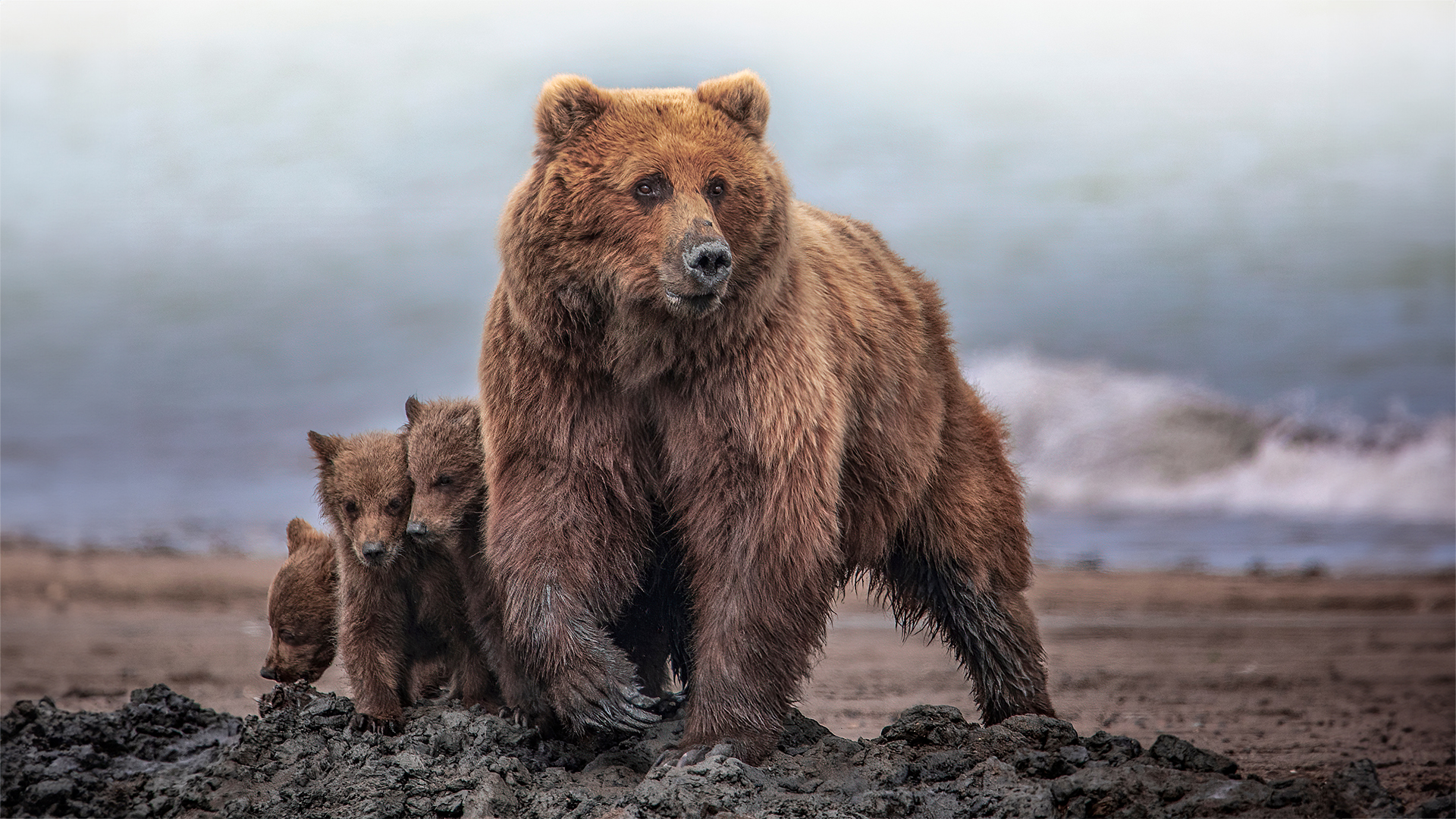America’s national parks are home to a number of alluring animals that hold a place in myth and folklore. Whether gazing into golden mists at first light and catching sight of the amber gleam of a coyote’s eyes in Yellowstone or standing before mighty brown bears as they snatch leaping salmon from Katmai’s waterfalls, it’s obvious why these majestic creatures have appeared in traditional stories and fairytales throughout history.

© Bruce Faanes
Meet some of the animals of North America’s national parks and learn the myths and legends they’ve inspired.
Brown Bear
Perhaps no animal is as saturated in Western folklore as the brown bear: from children’s teddy bears to Paddington and Pooh, the bear is a beloved character. Bears are prominent figures in many Native American legends, symbols of power, wisdom and healing. Stories of bears circulate throughout many cultures—in Finnish mythology, there is a bear spirit called Otso that was ‘nursed by a goddess of the woodlands in a cradle swung by bands of gold between the bending branches of budding fir trees.’ Other names for Otso include ‘The Honey-Eater’, ‘Golden Light-Foot’ and ‘The Fur-robed Forest-Friend.’
A more threatening figure presents itself in the Japanese onikuma, a demon bear that walks on its hind legs, sneaking into villages and stealing livestock in the dead of night. In Greek mythology, there is the story of Callisto, a princess who is transformed into a bear by Hera after it is discovered she is carrying the child of Zeus. She and her son are later placed among the stars as Ursa Major (the Great Bear) and Ursa Minor.

Painting of Ivan and Yelena the Fair in the Russian fairytale “Ivan Tsarevitch, the Firebird, and the Gray Wolf” (1889), Viktor Vasnetsov via Wikimedia Commons

The Grimm fairytale “Snow White and Rose Red” from Josephine Pollard’s Hours in Fairy Land: Enchanted Princess, White Rose and Red Rose, Six Swans (1883) via Wikimedia Commons
In the Grimm fairytale Snow White and Rose Red, two girls let a bear inside their cottage each night to rest by the hearth. After killing a wicked dwarf who has cast a spell on him, the bear turns into a prince, who Snow White marries, while Rose Red marries his brother.
Another fable, Bearskin, tells of a poor soldier who makes a pact with the devil—he must wear a bearskin for seven years in exchange for limitless riches. He ends up falling in love with a sweet, young maiden in a tale with parallels to Beauty and the Beast. Tales like these of human-bear transformations may have inspired the character Beorn in J.R. Tolkien’s The Hobbit, who shapeshifts into a giant bear.

© Ferenc Cegledi
Gray Wolf
While bears are typically portrayed in a favorable light in fairytales, wolves are often the antithesis. The Big Bad Wolf archetype has played a fearsome role in many childhood stories, including Little Red Riding Hood and The Three Little Pigs. Yet, in many Indigenous nations, wolves are associated with loyalty, courage and strength.
The Nunamiut of northern Alaska, the Squamish of the Pacific Northwest and the Naskapi of Labrador, Canada, admired the hunting ability of wolf packs and drew lessons from their team dynamics. In North Dakota, the Arikara have an origin myth that credits a wolf-human with the creation of the Great Plains, and the Ojibwe rever the wolf as a brother. Apache warriors would sing a ritual song before going into battle, hoping to gain the bravery and power of the wolf.
Outside of North America, there are other favorable accounts of wolves. A she-wolf suckled Romulus, the founder of ancient Rome, and his brother Remus in infancy. Some Turkish people believe themselves to be descended from wolves, and Mongolian herders have a legend that the wolf is their earliest ancestor. In Norse mythology, Geri and Freki are the faithful wolf companions of the revered god Odin. In the Russian fairytale Ivan Tsarevitch, the Firebird, and the Gray Wolf, the wolf is a truly heroic figure, uniting Prince Ivan with his true love, Helen.

© David Baxendale [CC BY-ND 2.0], via Flickr
Golden Eagle
This majestic animal has a noble history with human civilizations. In Greek mythology, the Aetos Dios, the Eagle of Zeus, served as personal messenger and animal companion to the mighty king of the gods. A golden eagle perches atop the crown of Yggdrasil, an immense ash tree of Norse cosmology that connects the nine realms of the universe.
In medieval Europe, the use of the so-called “royal eagle” for falconry was the reserved right of kings. And in the Altai Mountains of Mongolia, nomadic hunters work in harmony with these fierce birds to scan the valleys and hunt for small animals.
This bird of prey is held sacred in many Indigenous communities and, depending on the tribe, may be seen as a spiritual messenger or symbol of courage and power. The golden eagle is the most commonly designated national animal on the planet, representing the countries of Germany, Mexico, Austria, Albania and Kazakhstan.

© Mary Jo Cox
Coyote
In Native American myths, the coyote is often portrayed as a trickster, though one who often acts for the benefit of humankind, such as stealing fire to help humans survive cold winters. The Okanogan of northeastern Washington tell of how Coyote steals a salmon weir from two bird sisters and brings it to people so that they can catch fish. The Chemehuevi of the Great Basin have a story of coyote discovering the first horse.
Coyote in Navajo mythology has power over the rain and is responsible for the creation of the Milky Way and lunar phases. He appears in creation myths, healing ceremonies and teaching stories passed down to Navajo children generation after generation.
Meet these creatures of myth for yourself on our U.S. National Parks Adventures!































